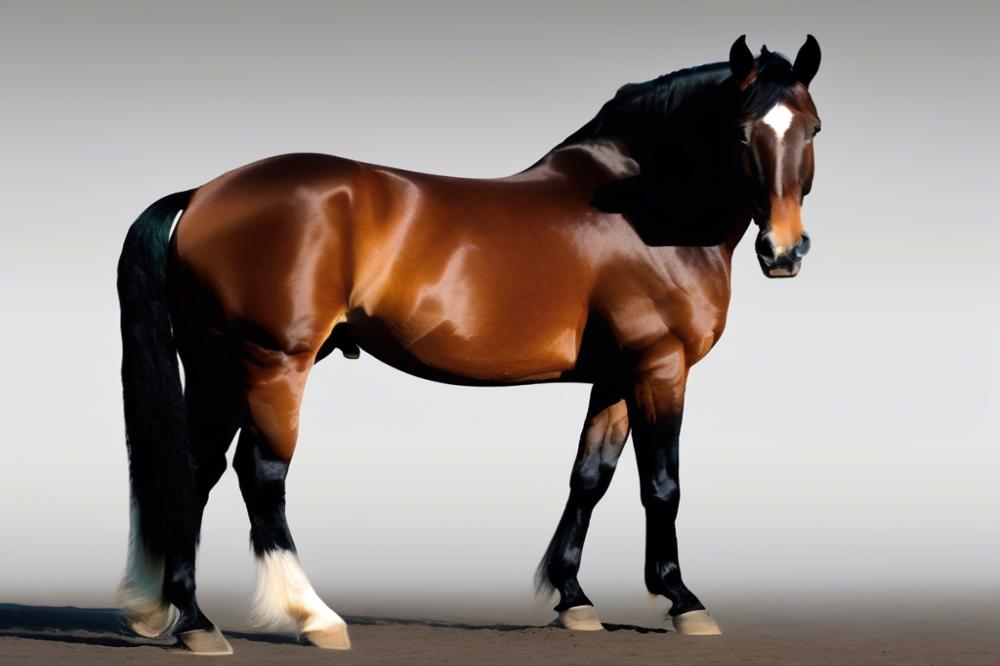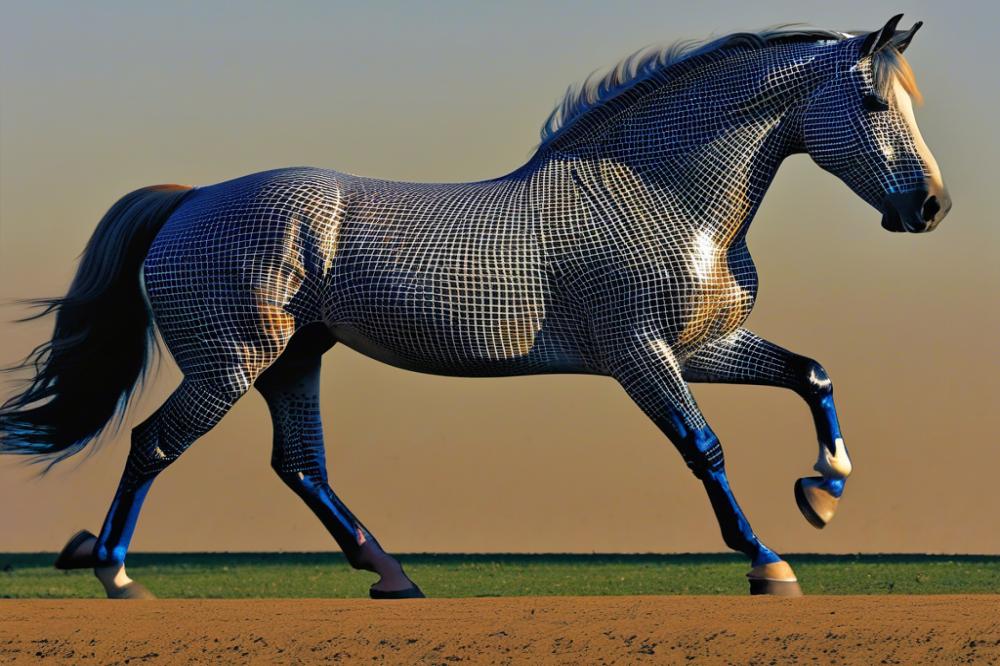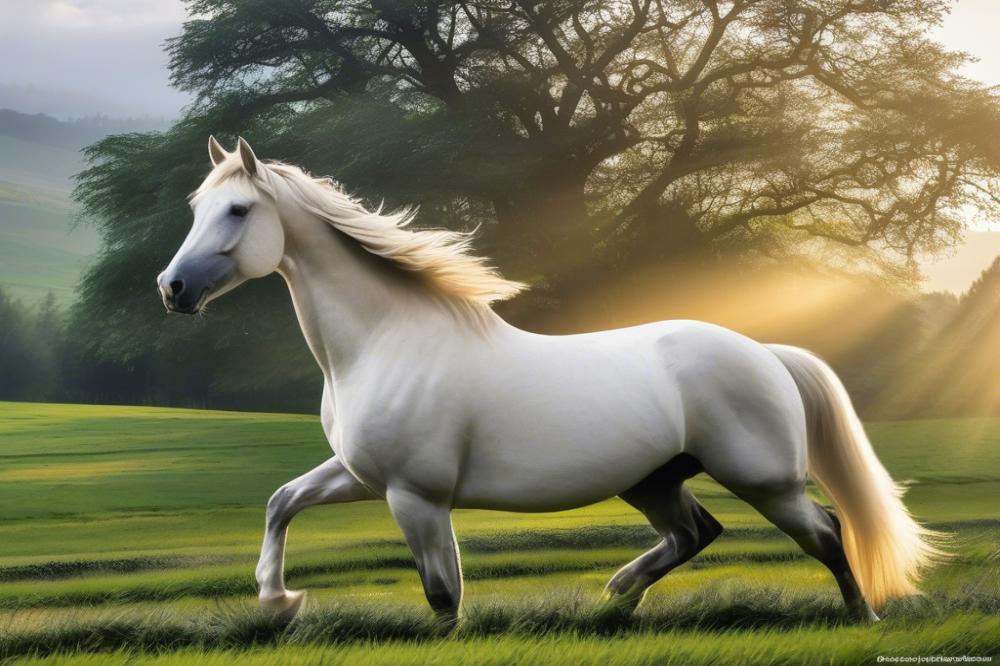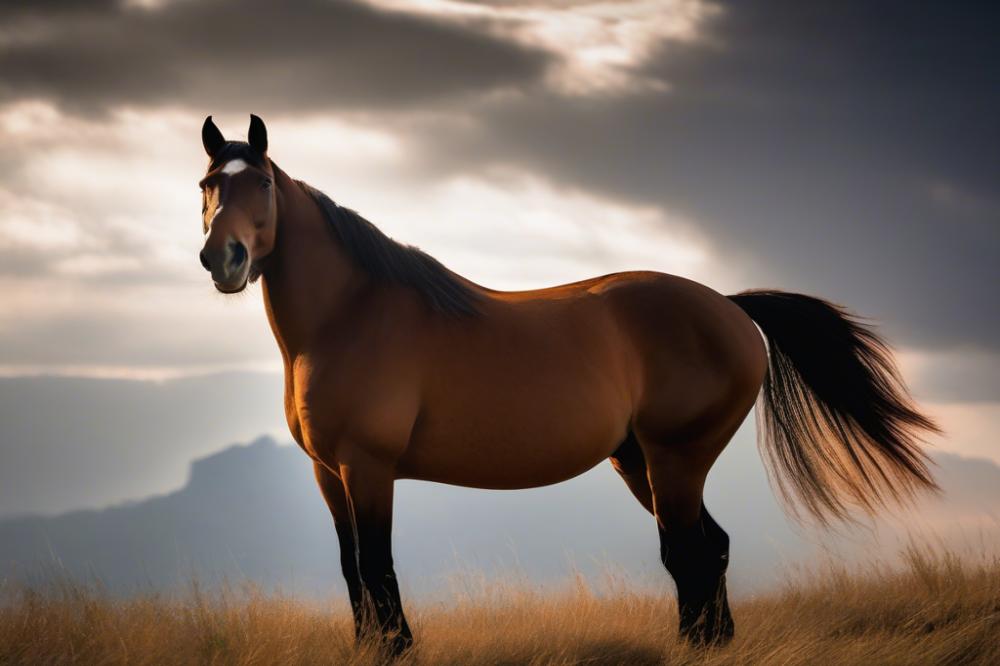Overview of the Fascination with Large Horses
Many people are captivated by the sheer size of horses, especially the tallest ones. Horses come in all shapes and sizes, proving that there is something special about the big ones. Their impressive stature evokes awe and wonder. When folks see a gigantic horse standing majestically in a field, it often feels like something from a fairy tale. Think of it like meeting a celebrity—there’s that unmistakable charm in their presence!
Understanding equine characteristics helps us appreciate these gentle giants even more. They not only need proper care but also come with their quirks and personalities, making each of them special in their own right. Although they might seem intimidating, many of these horses are gentle giants, full of love and affection. Just like finding out about various horse breed information, knowing how they are cared for opens up a whole new world of admiration for these majestic creatures.
Importance of Measuring and Recognizing the Biggest Horse

Why do people measure horses? It’s more than just a fun fact to toss around at barn parties. Recognizing the largest equine can draw attention to horse care, which is crucial for ensuring their well-being. After all, one wouldn’t want to neglect a horse, regardless of its size. In fact, large breeds require specific care routines just like their smaller counterparts. Not every rider dreams of galloping on a giant, but knowing their profiles can cater to those who do!
When talking about size, one might also compare them to British pony breeds. While these ponies have their charm and cuteness, it’s hard not to feel a tinge of jealousy toward the towering, long-legged steeds. The contrast highlights how diverse the equine world truly is. It’s about more than just height; it’s about the tales we share and the bonds we create.
Measuring and recognizing these magnificent creatures provides a fun size guide for collectors of horse stories. From gatherings of enthusiasts discussing their favorites to those who might just love browsing pictures, it’s clear that the fascination with these incredible animals runs deep. So the next time you come across a big horse, remember—it’s not just about having the tallest horse; it’s about celebrating their uniqueness without encouraging practices like polo animal cruelty. After all, embracing these animals with respect and admiration brings everyone together!
Historical Context

Large horses have trotted through many cultures across history. These equine giants have been admired for their size and strength. Different horse breeds have played huge roles in agricultural societies, especially in Europe and Asia. For example, the Shire horse from England was often used for heavy work, pulling plows and wagons. Its impressive stature has made it a symbol of power. People even bragged about their horses as much as they did about their land or livestock!
Chinese culture has a fascination with big horses, too. Legend has it that war horses, like the Mongolian horses, were sometimes bred to be larger to carry armored knights into battle. These noble beasts had a reputation that echoed through history. The sheer size of such horses inspired countless tales and stories.
Moreover, the famed Clydesdale horse, recognized by its height and feathered legs, is another notable giant. This breed became famous in America, thanks in part to a certain beer company. People everywhere admired those tall horses as they marched in parades, showcasing their equine characteristics with elegance and pride.
Famous Historical Horses Known for Their Size
A few larger-than-life horses stand out in history. One, named Sampson, holds the title of the tallest horse recorded in history. Standing at an astonishing 21.2 hands, he was a Shire horse that amazed everyone who laid eyes on him. People flocked from miles around to witness his remarkable height. He was a true spectacle!
On the other hand, we have the famous Augustus, another Shire horse. He was a strong competitor in pulling competitions. His impressive strength and stature made him a household name among horse breed information enthusiasts. Stories of his mighty feats spread like wildfire throughout the countryside.
There’s also the legendary Big Jake, a Belgian horse, who claimed the title of the tallest living horse for many years. His sweet nature was as big as his stature. Visitors would often come to see him, admiring how horse care played a role in his remarkable health and temperament.
These massive horses not only captured the hearts of people, but they also became part of folklore. Their size often symbolized something bigger, like strength, bravery, or even nobility. It’s no wonder that many cultures created stories around them, weaving in aspects of their legend into everyday life.
The Record Holder

The title for the biggest horse goes to a gentle giant named Big Jake. He is a Belgian Warmblood, a breed known for strength and size. At the age of 20, Big Jake has proven he’s not just big in stature but also in heart. Standing tall at an incredible 20 hands 2.75 inches, which is about 6 feet 10 inches at the withers, he certainly attracts attention.
Horse breeds like the Belgian are known for their docile nature and impressive build. Big Jake weighs a whopping 2,600 pounds, which is heavier than some small cars! Imagine trying to put a saddle on him—plenty of horse care is needed to keep him healthy. His sheer size makes most horses look tiny in comparison.
When looking for horse breed information, size can be a major factor. Belgians are typically large, but Big Jake takes the cake. Even among horse profiles, he stands out as a true record holder. Despite his enormous size, he is gentle and loves interacting with visitors.
Being so large, Big Jake requires a special size guide for things like food and shelter. His diet is a mix of hay and grains, making sure he gets all essential nutrients. Friends of Big Jake often say that caring for him is like having a pet dinosaur. There’s nothing quite like the experience of being around such a massive yet sweet creation!
Physical Characteristics
When we talk about significant size differences in horse breeds, it’s hard not to notice the giants out there. Some breeds, like the Belgian and the Clydesdale, are known for their impressive stature. These horses can stand around 16 to 18 hands tall, making them stand out in any crowd. Their massive frames and strong muscles give them a robust appearance that commands respect. Meanwhile, smaller breeds such as the Shetland or the American Miniature Horse barely reach 10 to 12 hands high. Isn’t that an amazing difference?
The size of a horse isn’t just about height; it’s also about build. Some breeds are stocky and muscular, while others have a leaner, more graceful frame. These equine characteristics can affect everything from how a horse moves to how much weight they can carry. And boy, do jockeys ever need to consider this when picking a horse for races!
Several factors influence the size of horses. Genetics plays a significant role. Just like people, horses inherit traits from their parents. Nutrition also impacts growth. A horse with a well-balanced diet will likely grow larger and stronger than one that doesn’t. Horse care is pivotal in this process; owners who provide the right feed and environment support better growth. Even climate can have an effect. In colder regions, larger horses tend to be more common as their size helps with warmth.
Horse breed information reveals even more about size. For instance, draft breeds, known for their strength, often appear larger due to their heavy build. On the other hand, lighter breeds, like thoroughbreds, emphasize speed over size, leading to a more slender appearance. These distinctions are fascinating when you begin looking at various horse profiles!
If you’re curious about a size guide, remember that measuring horses isn’t just about height. Weight and body condition matters too. A horse may measure tall, but if it’s underweight, it might not show the same presence as a healthy, robust one.
Care and Maintenance of Large Horses
Unique Needs of the Biggest Horse
Taking care of a large horse is a bit like having a giant puppy. Size matters! Big animals often have bigger needs. Their diet must be special to keep them healthy. These creatures require a careful balance of hay, grains, and nutrients. If you fill their bowl with just anything, they might not get what they need to thrive. Always check with a vet or an expert on horse breeds for specific recommendations.
Housing is another important factor. Large horses need plenty of space to roam. A stall that’s too small feels like a cramped room. During summer, they often prefer shade. On chilly days, a warm place to curl up is essential. Protect them from extremes of weather because big horses can be sensitive.
Diet, Housing, and Health Care Considerations
Feeding schedules should reflect their size. Many owners find that establishing a routine helps. Fresh water must ever be available, as hydration is key. Choose high-quality hay for their diet. Some people might skimp on that, but not realizing it affects their horse’s health can be costly.
Examine horse breed information when planning their care. Draft breeds, for instance, require more calories than lighter breeds. Look for horse profiles that include details about their specific needs. Keeping all this in mind goes a long way in promoting good health.
Regular check-ups are a must! Many folks underestimate the importance of veterinary care. Vaccinations and dental check-ups keep their system in top shape. Watch for any unusual signs. If they seem off, call the vet. It pays to be vigilant.
Routine grooming helps keep your big friend clean and comfortable. Brushing out a large coat can be a workout. However, it strengthens the bond between horse and owner. Plus, who wouldn’t want to pamper such a majestic animal? Always keep their hooves in good condition. A farrier visits regularly to trim and check their feet.
In summary, caring for your equine companion requires understanding and dedication. While it may seem like a lot, the joy they bring is worth every effort. Just remember, with great size comes great responsibility!
Impact on Breeding
How Size Influences Breeding Practices
Breeding practices often take size into account. Horse breeds vary dramatically in stature. Some are tiny ponies, while others tower over fences. Breeders might select for height when creating new equine profiles. Larger horses can be impressive, but this might come at a cost. They often require more resources like food and space. Adjustments in care can be significant due to their size.
Additionally, breeding for size can lead to specific health issues. Larger horses might struggle with joint problems or heart complications. Breeders need to balance size with good health. It’s a tricky game, playing with genetics. Each decision can affect many traits, not just height. It’s like a puzzle where every piece matters.
Ethical Considerations in Breeding for Size
Ethical concerns often arise when focusing solely on size. Some breeders might push for taller horses, ignoring important health needs. This practice can stray far from responsible horse care. It’s crucial that breeders prioritize the well-being of the horse. After all, none of us want a horse that’s a giant but has health issues.
Moreover, the focus on size can create a homogenous horse population. When everyone chases after that one ideal, it stifles diversity. A variety of equine characteristics benefits the entire horse community. Remember, a horse is more than just its height. Unique personalities and abilities deserve attention, too. In breeding, let’s not lose sight of what makes each horse special.
Breeding for size involves navigating both demands and ethics. Breeders are like chefs, mixing various ingredients to create quality horses. A dash of height might improve appearance, but it should not overshadow health. When breeding practices focus on welfare, everyone wins, and every horse shines in its own way.
Cultural Significance
The Role of Large Horses in Folklore and Mythology
Legends from many cultures celebrate big horses. These magnificent creatures often appear in stories as strong and majestic beings. In folklore, they represent power and grace. Think of Pegasus, the winged horse in Greek mythology. He symbolizes inspiration, soaring high above the ground. Many folk tales also have giant steeds that heroes ride on their epic quests.
Various horse breeds, like the Shire and the Belgian, often inspire awe because of their size and strength. In some cultures, these horses are seen as protectors or mythical companions. Ancient tales often dote on their sturdiness, making them symbols of wealth and status. A tall horse is like a tall tale – capturing the imagination with every tale told.
Symbolism of Size in Human Culture
In many ways, size represents influence. For centuries, larger individuals and animals were thought to carry greater authority. A horse that stands tall sends a message of dominance and prowess. Size does matter in horse breeds, affecting how they are perceived in culture. People often associate big horses with the ability to accomplish significant tasks, like plowing fields or carrying heavy loads.
Many cultures show off their largest horses at festivals. Parades can feature grand displays, where spectators marvel at their sheer size. It’s not just about the height; it’s about the presence. Some say a large horse embodies confidence, making onlookers feel inspired or even motivated.
Equine characteristics also play a role. A gently giant horse can be both intimidating and friendly, capturing hearts and imaginations. A horse profile sometimes only needs to display a confident stance to draw attention. After all, size can convey a sense of security to those around them.
Horse care can also vary depending on the breed and size. Larger breeds may need more feed, room, and special attention to stay healthy. People often talk about the responsibility that comes with owning such a magnificent animal. It’s important for horse owners to learn the right requirements. Following a size guide can help them provide the best for their beloved giant.
In stories, size can symbolize strength, protection, and a touch of whimsy. Tall horses have galloped through time, inspiring not just admiration, but also hope. Imagine every epic journey filled with tall steeds, setting the stage for extraordinary adventures.
Modern Perspectives
Current Perceptions of Big Horses in Equestrian Communities
Big horses often capture attention in equestrian circles. Enthusiasts sometimes associate them with power and grace. Horse breeds like the Clydesdale and Shire are favorites among admirers. People tend to be in awe of their enormous stature and gentle demeanor. Many owners believe these large equines have a calming presence. A massive horse can seem intimidating at first, but they often have sweet personalities.
However, not everyone shares this enthusiasm. Some folks think big horses are challenging to handle. The size can complicate their care. Grooming, for instance, takes more time and effort. Horse breed information plays a crucial role in understanding their needs. Owners need to be prepared for the unique aspects of horse care. From shoeing to feeding, the larger size can change the routine. It’s not just about size; it’s also about how the horse carries itself. The equine characteristics of large breeds can vary greatly.
Challenges and Advantages of Owning a Large Horse
Every coin has two sides, right? Owning a big horse can bring both joys and hurdles. Think about the appeal of the majestic view when riding. The sense of connection during a ride is often a major draw. Many riders enjoy the feeling of being on such a powerful animal. There’s a thrill in the air as they trot or gallop. Yet, finding a proper fit for tack can be tricky. Not all saddles are made for larger creatures. This aspect often surprises new owners.
Horse care involves much more than just keeping a horse fed and clean. A larger horse requires more space and a bigger stall. If a rider does not have enough land, it could cause problems. Some people also worry about the cost. Feeding a bigger horse can add up more quickly than expected. Horse profiles help potential owners assess if they are ready for the responsibility.
Conversely, many owners appreciate the loyalty of big horses. Their stature can provide a sense of security on the trail. Moreover, they often have a comfortable stride, making long rides enjoyable. Some owners say big horses seem to understand their riders more. This bond can be deeply rewarding. Community interactions usually sprout from shared experiences. Everyone loves a good tale from the saddle.
In summary, big horses present a mix of excitement and challenges. Understanding their needs and quirks makes the journey much smoother. Whether it’s giant feed buckets or extra grooming sessions, preparation is essential. Owning such a magnificent animal can certainly be a life-changing experience.
The Enchantment of Equine Giants
When it comes to the biggest horse in the world, it’s thrilling to think about the sheer size and presence these majestic animals have. Just picture a gentle giant that captures our imagination! Horse lovers, enthusiasts, and even the casual observer can’t help but marvel at these magnificent creatures. Whether it’s their towering height or distinctive features, large horses embody an enchanting aura that draws people in. They inspire awe and curiosity, creating moments that stick in our minds like a favorite story.
The future of breeding larger horses is an interesting subject. As people learn more about genetics, there might be potential for breeding even more enormous equines. Yet, size doesn’t always equal strength, which emphasizes the importance of responsible breeding practices. Horse herds benefit from diversity, and maintaining a healthy balance is essential. Breeders must consider the health and well-being of these animals and not just their measurement in hands and inches. After all, a well-rounded horse is more valuable than merely a tall one!
Culturally, large horses have made quite an impact. They’re often associated with impressive displays at competitions or even in historical contexts. Imagine a stallion flaunting those fancy dressage braids, captivating an audience. These remarkable attributes paint a vivid picture of power and grace. The fascination with large horses in culture can be seen in movies, books, and art that celebrate their beauty and strength.
Looking ahead, one can’t help but ponder how our view of horses will change. Will we see more advancements in training and care that cater specifically to these larger beings? Or possibly, will they inspire new styles of riding and disciplines that highlight their unique capabilities? The bond between humans and their equine partners is ever-evolving, and there’s no telling what creative paths we’ll take together.
As we wrap up, it’s clear that the fascination with these gigantic horses will endure. They’ve secured their place in our hearts. These powerful creatures remind us of the raw beauty of nature and the joy of connection. So whether you’re riding down a trail or simply admiring their grace from afar, remember that every horse—big or small—has stories to tell and lessons to share.



